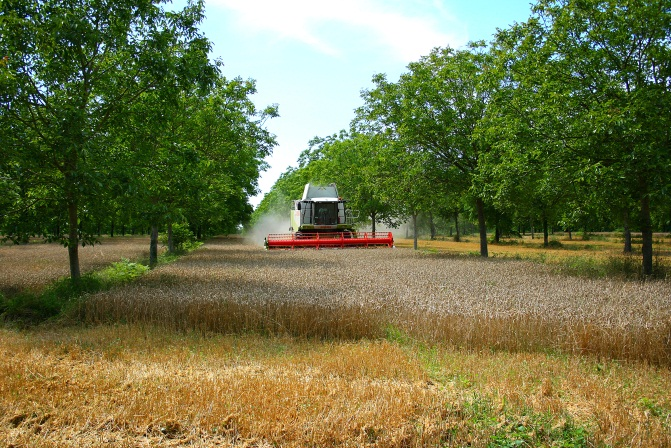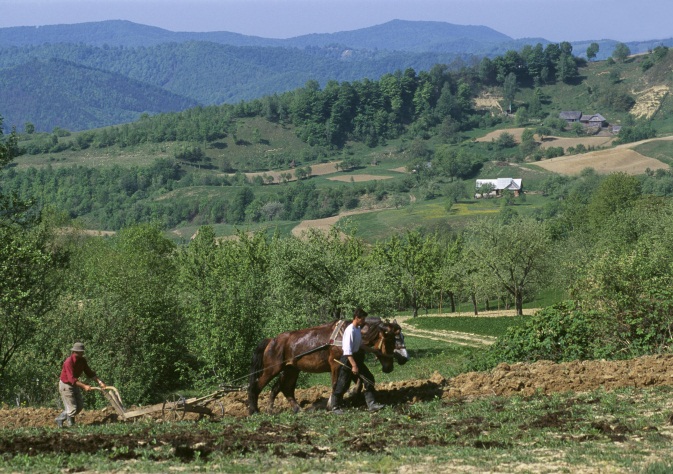Introduction
In the rural development policy (representing around 20% of total CAP spending), co-exist measures supporting landscape provision and supporting the valorisation of landscapes, and this is a clear strength of the CAP with regard to landscape management. Measures directly targeting landscape provision are for example the agri-environmental measures supporting the maintenance or restoration of landscape traditional features at farm-scale. Landscape valorisation is supported by the CAP through some of the Axis 1 (Improving the competitiveness of the agricultural and forestry sector) and Axis 3 measures (quality of life in rural areas and diversification of the rural economy). These measures aim at enhancing the economic viability of rural areas and thus help farmers to capture the socio-economic opportunities offered by the existence and attractiveness of landscapes in rural areas.
The main limitations of the rural development policy with regard to landscape managements are: (i) the too limited use of rural development policy instruments to encourage the collaboration and coordinated actions of different land owners and managers at landscape scale; (ii) the lack of integration between landscape provision and landscape valorisation measures.
Overall, the contribution of the different rural development measures to the landscape objectives is very often context-specific and dependent upon a range of factors, such as how and where the management actions are implemented and the level of uptake across a region or target area.
Evidence from the literature
Rural development measures can support landscape management through two channels: either by supporting the provision of landscapes or by targeting landscape valorisation, i.e. the provision of services and activities linked to the existence and attractiveness of landscapes in rural areas.
Landscape provision
Agri-environmental measures are the primary instrument in the rural development policy to encourage farmers to provide landscape public goods. Measures focused on landscape provision are mainly targeting the conservation and restoration of landscapes features, such as the maintenance of high nature-value farmland areas, the conservation of historical features (e.g. stonewalls, terraces, small wood), management of pastures and extensification of farming systems. Measures supporting (agro-)forestry also have the potential to create high value landscapes including forest-field mosaic or the presence of trees on cultivated land. It is not always clear whether such measures have encouraged farmers to uptake additional landscape management actions, or if they have only rewarded farmers for practices they would have adopted in the absence of this economic incentive.
If all these measures can contribute to the conservation of landscape features at farm-level, there is no guarantee of major positive impacts at the landscape scale. To ensure that the farmers' efforts in landscape management deliver the maximum aesthetic and cultural value and environmental benefits, landscape management requires integrative instruments to coordinate the scattered actions of multiple landowners and to ensure that all public benefits associated with landscapes are captured. Financing instruments for groups of actors have been further developed in the CAP post 2014. First, there is the possibility to implement greening at regional level or for a group of farmers (instead of at farm level) in order to obtain adjacent ecological focus areas. Second, when the commitments are undertaken by a group of farmers, agri-environmental payments can be increased. Third, the support to promote forms of co-operation involving at least two entities can be extended to more than seven years for joint approaches to environmental projects, including the preservation of agricultural landscapes.

© Agroof
A second group of measures indirectly relates to the provision of landscapes by improving the sustainability of agriculture, such as support to less Favoured Area payments or support to compensate for the additional costs of undertaking appropriate management on agricultural Natura 2000 sites and for the application of the Water Framework Directive.

© European Commission Audiovisual service, DG Regional policy Photo library
Landscape valorisation
Landscape valorisation is indirectly supported through Axis 1 and Axis 3 measures. Some of the measures targeting the diversification of on-farm activities and the maintenance and development of services and actions in rural areas support farmers to capture the socio-economic opportunities offered by the existence and attractiveness of landscapes in rural areas. More indirectly, by bolstering farm incomes in regions where there are few other economic activities, these measures contribute to the maintenance of farmers and their families in rural areas. Doing so, it guarantees the maintenance of farmed landscape and reduces the risk of land abandonment. For example, measures supporting farmers who participate in food quality schemes encourage innovation in food quality. By supporting sustainability and profitability of farming, these schemes reduce the risk of land abandonment, and the associated closure of landscape. Moreover, food quality schemes have the potential to influence landscape more directly as product specification must include not only the description of the agricultural product, but also the definition of the geographical area.
Empirical Case Study Evidence
Strength: In the rural development policy, the co-existence of measures supporting landscape provision and supporting the valorisation of landscapes is a clear strength for landscape management (Examples AT, DE, ES, PL).
Weakness: The limited integration between RDP instruments and the limited use of coordination mechanisms between farmers limit the efficiency of RD policy in contributing to landscape management. (Examples BG, IT, FR, PL)
Conclusions & recommendations
In order to capture the maximum environmental and socio-economic benefits from landscapes, Rural Development Policy should support the provision, but also the valorisation of agricultural landscapes. While both types of measures exist in the current CAP, the better coordination and integration of these measures should become a priority. For example, actions supporting the embedding of landscape value in food products ('eat your view') can fulfil both provision and valorisation objectives: farmers are encouraged to maintain the landscapes associated to their production and visitors are encouraged to purchase local products.
To ensure that land managers and/or rural communities take action and efforts deliver the maximum benefits, we recommend the co-design of RD programs with farming communities, local stakeholders and the existing networks. Factors such as the existing traditions with regard to agricultural landscape management, the heterogeneity in preferences between land managers and other stakeholders, as well as the expected impacts of actions at landscape scale would thus more easily be taken into account.
The CAP should reinforce his role in preserving the diversity of European agricultural landscapes (worth conserving, in the same way as ecological biodiversity or linguistic and cultural diversity). Large socio-economic benefits could be reached by taking advantage of this diversity, for example the proximity of rural areas with other landscapes and sites of touristic interest (cities, forest, etc.). CAP support to agri-tourism may integrate such perspectives to overcome the problem of limited demand for rural tourism.
One potential way to encourage private initiatives contributing to landscape valorisation is by insuring that the socio-economic benefits associated with landscape management are not limited to policy payments, but can be generated by the market as well. One concrete example could be the implementation of a parking fee giving access to a farming protected area with high aesthetic value and recreation services. Farmers can initially be supported to undertake or restore the farming practices needed to keep the traditional landscape features, but most of the economic benefits are then generated by the visits.
The European Union priorities for rural development should go beyond "restoring and preserving the state of European landscapes". The EU objectives for landscape management should:
- Reflect current and future society demands, beyond the preservation and restoration paradigm, because the preferences and socio-economic conditions prevailing in the past when those traditional landscapes were shaped may be obsolete.
- Go beyond the management of landscape elements at farm-scale, including landscape structure and composition objectives at the landscape-scale, and the maintenance of the diversity of agricultural landscapes at the EU-scale.
Differentiate the landscape characteristics with potential for local valorisation, from those with global public good characteristics, as the policy incentives necessary may differ depending on whether the local or global characteristics are predominant.
